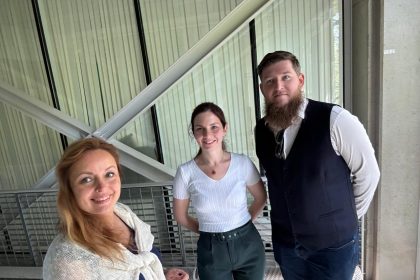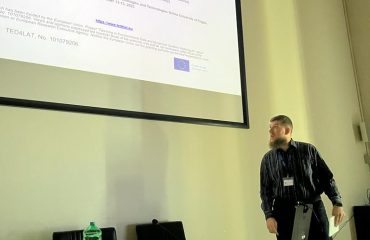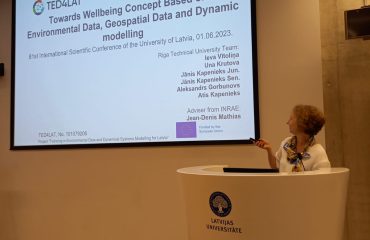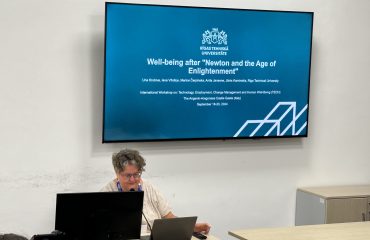
The Ted4Lat project has brought together bright minds to explore the frontiers of digital transformation and mobility. To understand the impact of this initiative, we sat down with two doctoral students, Dzintars Jankovskis and Guna Jakobsone-Snepste, to discuss their unique experiences, insights, and the profound effect the project has had on their academic and personal journeys.
Welcome, both of you. To start, could you each describe the Ted4Lat project in your own words, perhaps with a metaphor?
Guna Jakobsone-Snepste: “I see the Ted4Lat project as a complex dance performance.Each ‘dancer,’ or agent, moves according to specific rules and interacts with the others, creating a harmonious and dynamic show.This performance unfolds on the magnificent stages of Italy and France, where every movement reflects the processes of mobility and digital transformation.”
Dzintars Jankovskis: “For me, TED4LAT is like a lighthouse. It serves as a guiding light, helping Latvia navigate the uncertainties of environmental data.”
How has your direct involvement in this “performance” or “lighthouse” project impacted you?
Guna: “My life has changed completely. The Ted4Lat project has opened the door to new opportunities, knowledge, and experiences for me.A key part of this is that we are accompanied by experienced and excellent advisors. I worked with Guillaume Deffuant from INRAE.”
Dzintars: “My involvement has provided me with valuable insights into digital twinning and the technology it encompasses, which can be applied to e-learning.The desire to learn and grow during my doctoral studies really inspired me to join.The project gave me the chance to work with and learn from a very knowledgeable and professional scientist, Anna Carbone (POLITO).”
Have there been any unexpected discoveries or ‘aha!’ moments during your time with the project?
Dzintars: “I think the biggest discovery for me was that a very complex system can be explained in a well-defined framework like a digital twin.It was insightful to see that its technology can be applied in so many different industries.”
Guna: “For me, the realization was simpler but just as profound: everything is possible in life, you just need to find the right teachers and companions.”
Guna, you mentioned your journey started as a “lucky coincidence.” Could you tell us more about that?
Guna: “It truly was a very lucky coincidence to be in the place where Ted4Lat was built.The scientific and professional team helps everything happen so organically and seamlessly, you almost don’t notice the immense effort behind it.”
And Dzintars, you mentioned the collaboration with Anna Carbone led to a publication. How was that process?
Dzintars: “The collaboration was strong over more than eight months, and we got our desired result: a publication and further direction for my research.Coming from an engineering background, most of the concepts were understandable, but it was sometimes hard to apply them to my research.In the end, we found a middle ground, and I think that is the most important thing.”
Last question. If you could collaborate with anyone, living or historical, who would it be?
Dzintars: “I think it must be Michael Grieves, who is the ‘father of Digital twin’ and is still working on his ideas.It would be interesting to get his insight on the technology and how he sees it contributing to the e-learning world.”
Guna: “That’s an interesting question. I’d rather work with someone from the future!”



